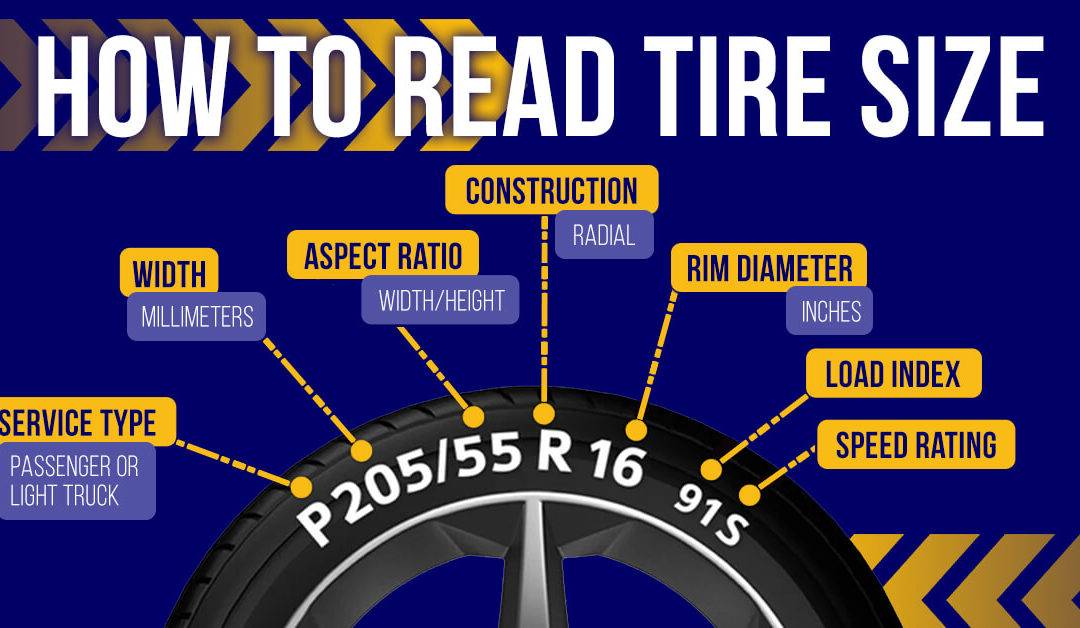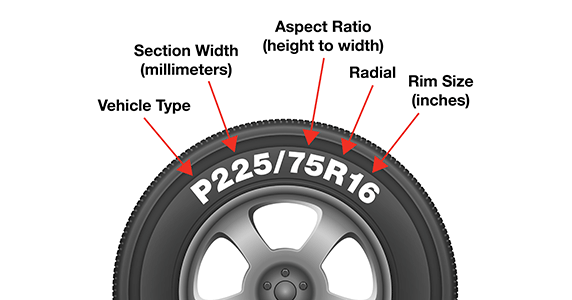Knowing how to read car tire measurements is essential for every driver. It ensures safety and improves vehicle performance.
Understanding car tire measurements can seem confusing at first. Those numbers and letters on the side of your tire are not just random. They convey important information about your tire’s size, type, and performance. This knowledge helps you choose the right tires for your vehicle.
It also aids in maintaining your car’s efficiency and safety. In this guide, we will break down these measurements into simple terms. By the end, you will be able to read and understand car tire measurements like a pro. Let’s dive in and make sense of those tire codes together.
Introduction To Tire Measurements
Knowing tire measurements is important for car safety. It helps you choose the right tires. This ensures your car performs well. It also keeps you safe on the road. Incorrect tire sizes can affect your car’s handling. It can also reduce fuel efficiency. This can lead to more costs over time. So, always check your tire size before buying new ones.
Common tire terms include width, aspect ratio, and diameter. Width is the tire’s width in millimeters. Aspect ratio is the height of the tire’s sidewall. It is a percentage of the width. Diameter is the size of the wheel the tire fits. Knowing these terms helps in understanding tire sizes. It makes buying tires easier.

Credit: www.lesschwab.com
Reading The Tire Sidewall
First, find the tire size on the sidewall. It is usually a combination of letters and numbers. This information is important for buying new tires. Look for a sequence like P215/65R15. Each part of this code tells you something about the tire. Make sure you read the entire sequence carefully.
Let’s break down the code P215/65R15. The first letter, “P,” stands for “passenger car.” The number “215” is the tire’s width in millimeters. Next, “65” is the aspect ratio. It shows the height of the sidewall as a percentage of the width. The letter “R” means radial construction. Finally, “15” is the wheel diameter in inches. Understanding these parts helps you choose the right tire.
Understanding Tire Width
Tire width is the distance from one side of the tire to the other. It is measured in millimeters. A wider tire can provide better grip. It also affects the car’s stability and fuel efficiency. Always check the tire width before buying new tires.
Look at the numbers on the sidewall of the tire. The first three numbers show the tire width. For example, in “205/55R16,” 205 is the width. Use a ruler or caliper for a physical measure. Measuring from one side to the other will give you the width. Always measure at the widest point of the tire.
Aspect Ratio Explained
The aspect ratio of a tire is the height of the tire’s sidewall. It is shown as a percentage of the tire’s width. A lower aspect ratio means a shorter sidewall. For example, a tire with a 50 aspect ratio has a sidewall height that is 50% of the tire’s width.
Aspect ratio affects your car’s ride and handling. Tires with a low aspect ratio often provide better handling. They may give a rougher ride. High aspect ratio tires offer a smoother ride. They may not handle as sharply. Choosing the right aspect ratio is key for your driving needs.
Deciphering The Diameter
Understanding how to read car tire measurements is essential for proper tire care. Learn the basics like tire width, aspect ratio, and wheel diameter. Ensure your vehicle’s safety and performance with the right tire knowledge.
Wheel Diameter Basics
The wheel diameter is the size of your tire from one end to the other. This measurement is usually in inches. It helps in knowing if a tire fits your car. Check the sidewall of the tire for a number. For instance, you might see “15” or “17”. This number is the diameter.
Finding The Correct Diameter
Look at your tire’s sidewall. Find a sequence like “205/55R16”. The last number shows the diameter. In this example, “16” means the tire fits a 16-inch wheel. Always match this number to your car’s wheel size. It ensures safety and performance.

Credit: dandrcarcare.com
Tire Load Index
The tire load index tells how much weight a tire can handle. Each number on the index represents a specific weight. For example, a load index of 95 means the tire can carry 1,521 pounds. The higher the number, the more weight the tire can support. Always check the load index before buying new tires.
First, find the load index number on your tire’s sidewall. It’s usually after the tire size. For example, in “225/45R17 91V,” the load index is 91. Then, use a load index chart to see how much weight it can handle. Make sure your tire’s load index matches your car’s requirements. Safety first!
Speed Rating
Speed rating indicates the maximum speed a tire can safely maintain. It’s marked on the tire sidewall as a letter. Higher letters represent faster speeds.
Understanding Speed Ratings
Speed ratings show the top speed a tire can handle. These ratings are shown as letters. For example, “S” means up to 112 mph. “T” stands for up to 118 mph. “H” is up to 130 mph.
Each letter tells us how fast a tire can go safely. Knowing your tire’s speed rating helps you drive safely. Always check the rating before buying tires.
Matching Speed Rating To Your Car
Your car’s manual will list the needed speed rating. This rating matches the car’s top speed. Using the right rating is key. It keeps you safe. It helps the car perform well.
Never use tires with a lower rating than needed. This can be dangerous. Always choose the correct rating for your car.

Credit: www.monro.com
Additional Tire Markings
Each tire has ratings for temperature and traction. These ratings help you understand how safe the tire is. The temperature rating shows how well the tire handles heat. It can be A, B, or C. A is the best, and C is the lowest. The traction rating shows how well the tire stops on wet roads. It can be AA, A, B, or C. AA is the best, and C is the lowest. Always check these ratings for safety.
DOT codes are important. They tell you the tire’s age. The code has four numbers. The first two numbers are the week of the year. The last two numbers are the year. For example, 2318 means the tire was made in the 23rd week of 2018. Manufacturer codes tell you where the tire was made. Look for these codes on the tire’s sidewall. They give you important info about your tire.
Tips For Buying New Tires
Check the tire size on the side of your current tires. Look for a series of numbers and letters. For example, you might see something like 205/55R16. The first number, 205, is the width in millimeters. The second number, 55, is the aspect ratio. The “R” stands for radial. The last number, 16, is the wheel diameter in inches. Match these numbers when buying new tires.
Ask an expert if unsure about tire sizes. Professionals can give advice. They help you find the best tires for your car. They can check if the new tires fit well. Experts can also suggest good brands. They ensure your safety on the road.
Frequently Asked Questions
How Do You Read Tire Measurements?
Read tire measurements by checking the sidewall. Numbers indicate width, aspect ratio, and diameter. For example, 205/55R16 means 205 mm width, 55% aspect ratio, and 16-inch diameter.
What Does 35×12 5×17 Mean On A Tire?
35×12. 5×17 means the tire is 35 inches in diameter, 12. 5 inches wide, and fits a 17-inch wheel.
What Does 225 60r17 99h Mean?
225 60R17 99H indicates tire specifications. 225 is the width in millimeters. 60 is the aspect ratio. R means radial construction. 17 is the diameter in inches. 99 is the load index. H is the speed rating.
What Does 205 55 R16 Mean On A Tire?
205 55 R16 refers to tire size. “205” is the width in millimeters. “55” is the aspect ratio. “R” stands for radial construction. “16” is the rim diameter in inches.
Conclusion
Understanding car tire measurements is essential for safe driving. Correct tire size ensures better performance and safety. Regularly check your tire measurements. Follow the guidelines provided in this blog. This practice helps maintain your car in good condition. Proper tire size also improves fuel efficiency.
Now, you can confidently read tire measurements. Happy and safe driving!

